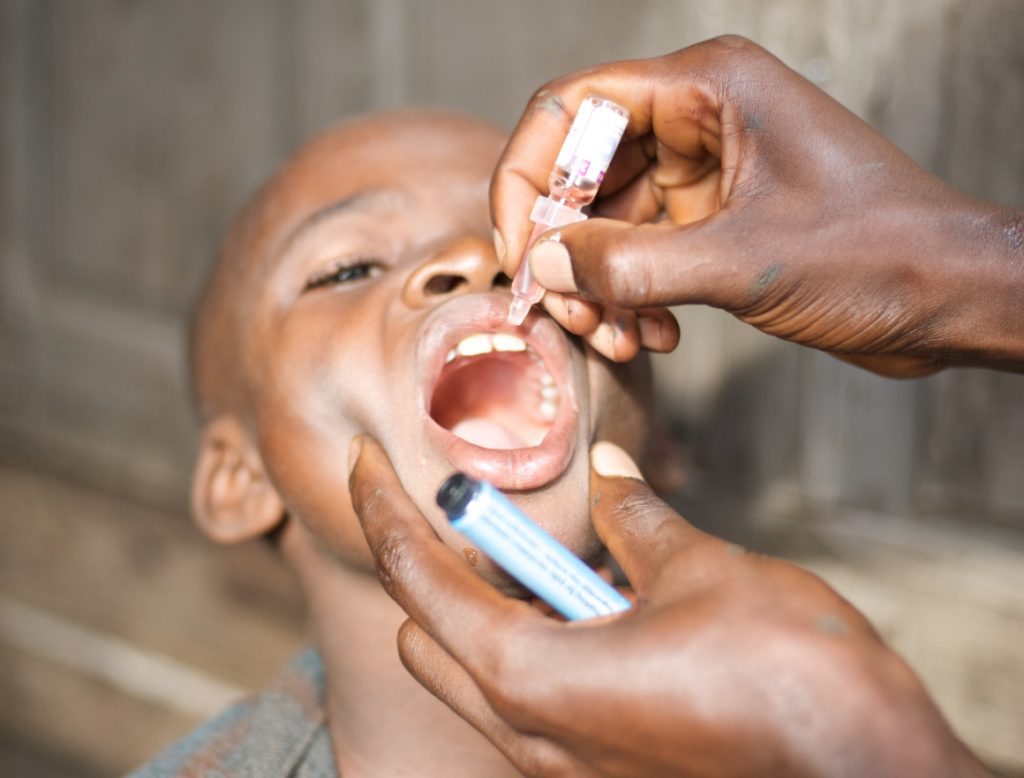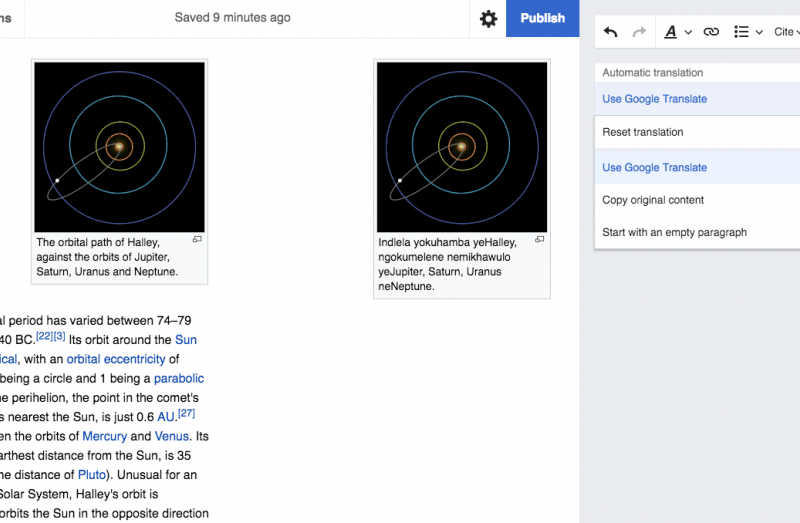The Medical Translation Task Force has boosted its productivity by 17% and increased the amount of health care content by using the content translation tool.
Rather than handing out a Microsoft Word document full of Wikimedia markup for translation, translators are being coached on how to use the content translation tool. As a new process, this change met some resistance, but the payoffs are justifying the effort—more total content is being uploaded to local-language Wikipedias and certain languages now have complete coverage of a health topic. In this case, we’re working on the 23 ‘essential’ vaccines, as determined by the World Health Organization.
It is like the old parable: give a man a fish and you feed him for a day (akin to individual translation requests); teach a man to fish and you feed him for a lifetime (akin to using content translation).
The greatest success stories thus far are in Burmese, Malay, and Odia. An additional 136.5 million native language speakers now have access to accurate, free, and easy to access health care information on all 23 essential vaccines in their local-language (where virtually none existed before). This breadth of medical content is important to make Wikipedia a go-to and trusted source of information. An additional 71.7 million speakers (in such languages as Thai, Romanian, and Yoruba) now have access to at least a third of the 23 vaccine articles. We are actively working in 31 other languages to improve articles about vaccines.
For 2016, the Medical Translation Task Force of WikiProject Med Foundation is focused on nurturing more long-term contributors to foster health care content in local-language Wikipedias. This new focus involves teaching translators how to use content translation and access manageable length summaries of important health topics. Raw output in January/February was 178 new (or significantly improved) articles in 23 languages with 77 of those articles generated by the content translation process (a respectable 11% increase over November/December which had no content translation translations).
But more significant is that the total time spent requesting translations, uploading and merging translations, and following up with volunteers has decreased. It is estimated that productivity (new medical articles relative to the coordination efforts to create them) has improved 17%. Quite simply, once translators learn to use the content translation tool, they are self-directed and generate more output with less project management.
Content translation is a beta feature available on all Wikipedias. Once enabled, users can easily start a side-by-side translation that preserves all the important wikicode—notably the citations and interwiki links (templates are an exception) and then upload it to the target Wikipedia with a single click. It requires lots of encouragement and facilitating to get non-Wikipedian volunteer translators to put aside trusted translation software and try the content translation tool, as non-Wikipedians seem intimidated by the prospect of making a public mistake on Wikipedia.
To ease the process, they are being given a unique pre-made Wikipedia user account with the beta content translation tool activated, a note on their user page, and a couple of vaccine summaries pre-loaded on their account. All they have to do is log-in and try it out. A YouTube video serves as the how-to file.
The pre-made user accounts also make it easy to track volunteers’ progress and do quality control. In some instances, helpers are hesitant to hit “publish” button and project coordinators intervene and make their contribution live. In other instances, the published translations have to be moved from a work space into the main space. Since this project uses summary files—basically the leads of the English articles rather than full length medical articles—the repository of files is not in the main space.
Content translation normally presumes that you are translation an existing article from the main space of one language to fill in for a non-existent article in another language. Members of the Translation Task Force (notably Doc James) generate these summaries by improving and referencing the leads. The vaccine articles get about 275,000 pageviews in English per month.
The volunteer translators consist of past helpers from Translators Without Borders (TWB). In collaboration with TWB, these particular translations took place entirely on the content translation platform yet credit (word count) is still given in the TWB workspace to both honor the great working relationship with TWB and reward the volunteers. Numerous translators request getting TWB recognition prior to agreeing to try the content translation tool. So at month end, the Translation Task Force uploads quasi work orders on TWB to acknowledge the efforts of these volunteers.
Over time, we imagine improving Wikipedia will grow to become an even greater reward.
Lucas559, WikiProject Med Foundation
The views expressed in these stories are not necessarily those of the Wikimedia Foundation or Wikipedia; responses and critical commentary are invited in the comments section below.




